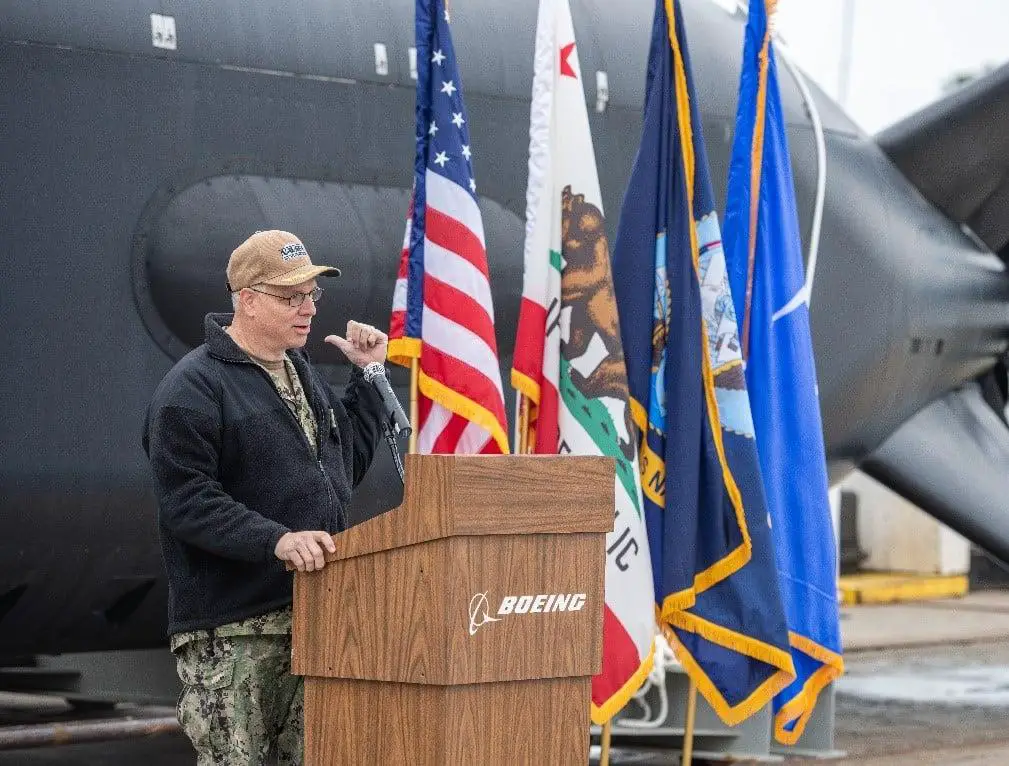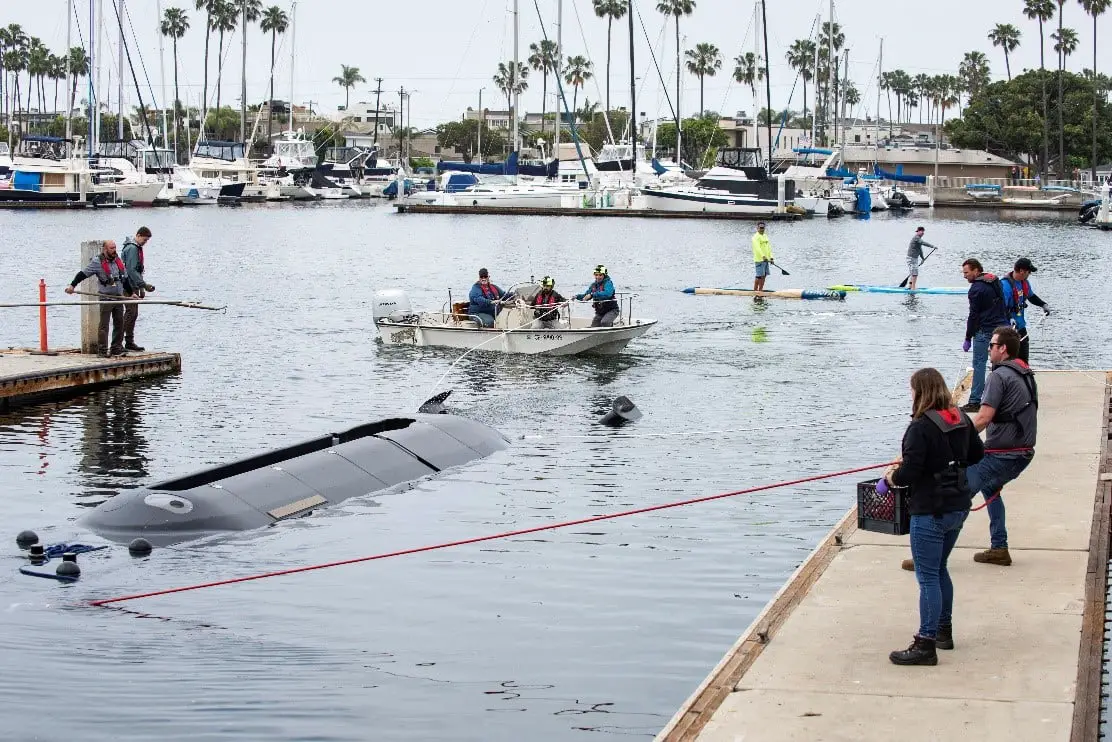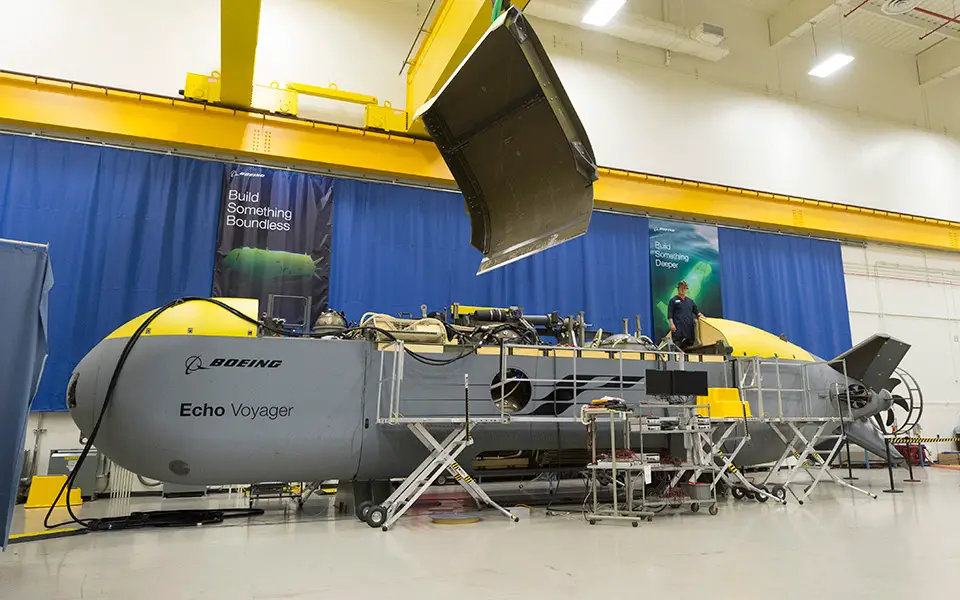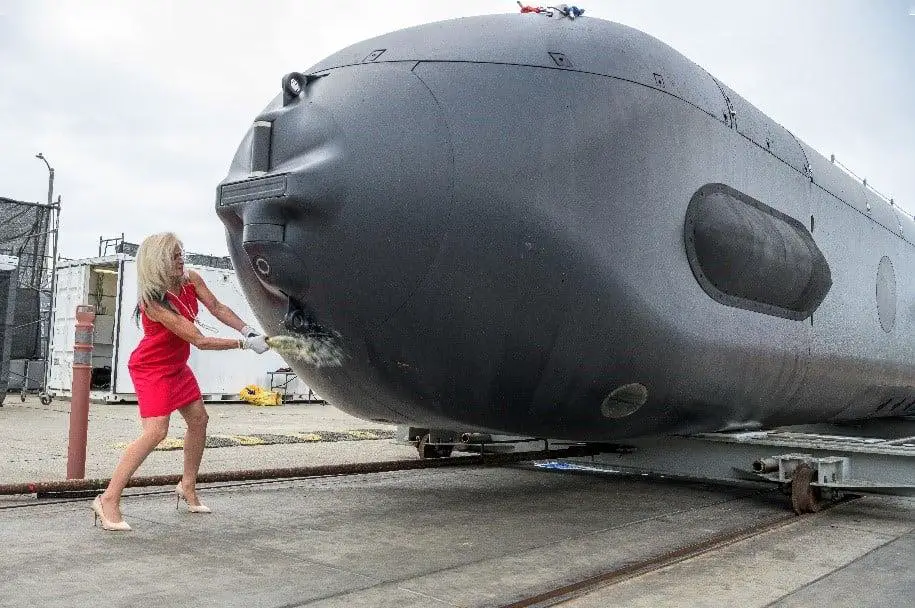The U.S. Navy Naval Sea Systems Command (NAVSEA) marked an important milestone in its effort to develop reliable undersea capability with the christening and first in-water test of the Orca Extra Large Unmanned Undersea Vehicle (XLUUV) Test Asset System April 28, 2022 in Huntington Beach, California. Capt. Scot Searles, program manager for Unmanned Maritime Systems (PMS 406), representatives from the office of the Deputy Assistant Secretary of the Navy for Ship Programs and the Undersea Warfare Division of the Chief of Naval Operations, and Boeing executives marked the occasion. The test asset system is critical in the performance and production of the five operationally relevant prototype Orca XLUUVs.

Boeing and Huntington Ingalls Industries are teaming on the design and production of Unmanned Undersea Vehicles (UUVs) in support of the U.S. Navy’s Extra Large UUV program. Boeing won a $43 million contract for the fabrication, test, and delivery of four Orca Extra Large Unmanned Undersea Vehicles (XLUUVs) and associated support elements. The Orca XLUUV will be modular in construction with the core vehicle providing guidance and control, navigation, autonomy, situational awareness, core communications, power distribution, energy and power, propulsion and maneuvering, and mission sensors. The Orca XLUUV will be an open architecture, reconfigurable Unmanned Undersea Vehicle.

Boeing is a leader in the XLUUV market, providing autonomous, long-range multi-mission systems that support U.S. undersea capabilities. With a modular payload bay and advanced autonomy enabling months of operation at a time without physical human contact and in congested waters, XLUUV solutions are designed to deliver flexible mass to the fight. Boeing has designed and operated manned and unmanned deep sea systems since the 1960s, including Rockwell International legacy systems and U.S. Navy support programs. Prior to Echo Voyager, Boeing developed Echo Seeker and Echo Ranger, autonomous and large UUVs as test beds for its current XLUUV. The vehicle’s advanced autonomy enables it to perform at sea for months at a time, delivering a more affordable over traditional UUVs.

Echo Voyager is a fully autonomous extra large unmanned undersea vehicle (XLUUV) class UUV that can be used for a variety of missions that were previously impossible due to traditional UUV limitations. Echo Voyager’s range covers 6,500 nm (1 fuel module) allowing the vehicle to perform long endurance operations. Echo Voyager is not launched from or recovered to a support vessel, nor does it require a support vessel for operation. The 51-foot-long vehicle is designed to incorporate a modular payload section for multiple uses up to 34 feet in length and 2000 cubic feet in volume, and can include payloads extending outside of its envelope. Powered by a hybrid combination of battery technology and marine diesel generators.
